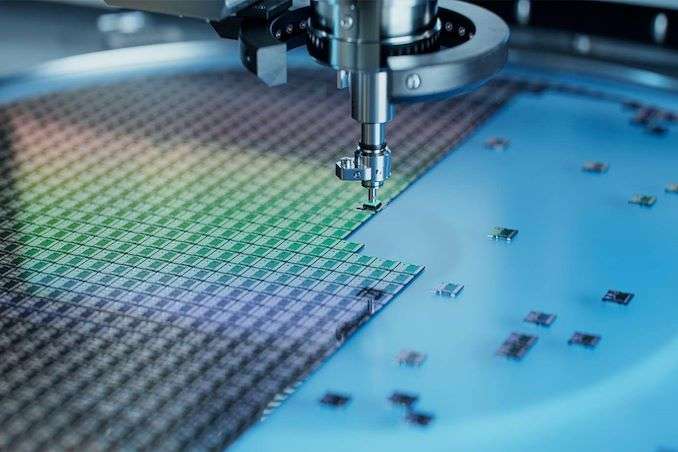
Rapidus Secures $3.9 Billion to Develop 2nm Chip Technology
The Japanese semiconductor startup, Rapidus, has secured a substantial $3.9 billion in government aid. This significant investment will fuel the company’s ambitious plans to develop cutting-edge 2-nanometer (nm) chip technology and pioneering multi-chiplet designs. The funding underscores Japan’s commitment to regaining a leading role in the global semiconductor industry. This move is strategically important, given the current geopolitical landscape and the increasing demand for advanced chips. The implications of this investment are far-reaching and will likely reshape the competitive dynamics within the semiconductor market.
Understanding the Significance of 2nm Technology
The pursuit of 2nm technology represents a monumental leap forward in semiconductor manufacturing. Shrinking transistors to this scale allows for significantly increased performance, power efficiency, and density. Imagine smartphones that process information at lightning speed while consuming minimal battery power. This is the promise of 2nm technology, and Rapidus is poised to be at the forefront of this revolution. The development and mass production of 2nm chips will require substantial investment in research, development, and advanced manufacturing facilities, which is precisely what this government funding will enable.
The Challenges of 2nm Manufacturing
Developing 2nm technology is not without its challenges. The intricacies involved in manipulating materials at this incredibly small scale are immense. Extreme ultraviolet (EUV) lithography, a crucial technology in chip manufacturing, will require significant advancements to achieve the precision needed for 2nm features. Yield rates, or the percentage of successfully manufactured chips, are expected to be initially low, presenting another hurdle to overcome. However, the potential rewards far outweigh the risks, driving the global race towards this technological milestone.
Multi-Chiplet Technology: A Paradigm Shift
Beyond 2nm technology, Rapidus’s investment also focuses on multi-chiplet technology. This innovative approach involves integrating multiple smaller chips (chiplets) onto a single package. This offers several advantages, including improved design flexibility, reduced manufacturing costs, and the ability to combine different specialized chips for optimal performance. The scalability of multi-chiplet technology is particularly appealing, making it suitable for a wide range of applications, from high-performance computing to artificial intelligence.
Advantages of Multi-Chiplet Design
- Reduced Development Costs: Developing and testing individual chiplets is often simpler and less expensive than creating a single monolithic chip with equivalent functionality.
- Increased Design Flexibility: Multi-chiplet technology allows for the integration of diverse chips with specialized functionalities, leading to more optimized and customized designs.
- Faster Time to Market: The modular nature of multi-chiplet designs can expedite the development and deployment of new products.
- Improved Performance: By combining different chip types, manufacturers can achieve superior performance compared to a single, monolithic chip.
Geopolitical Implications and Global Competition
Rapidus’s ambitious project has significant geopolitical implications. Japan’s renewed focus on semiconductor manufacturing aims to reduce its dependence on foreign suppliers and strengthen its technological sovereignty. This initiative counters the growing dominance of certain nations in the semiconductor industry and positions Japan as a key player in this strategically vital sector. The competition within this industry is fierce, with global giants vying for market share. Rapidus’s success will depend on its ability to innovate, overcome manufacturing challenges, and establish a strong global presence.
Economic Impact and Job Creation
The $3.9 billion investment is expected to generate substantial economic benefits for Japan. The project will create numerous high-skilled jobs in research, development, manufacturing, and related industries. It will also stimulate growth in supporting sectors, such as equipment manufacturing and materials science. The long-term effects on the Japanese economy could be transformative, positioning the country as a leader in a technology that underpins many aspects of modern life. The ripple effects will extend beyond the immediate employment numbers, significantly impacting innovation and economic output.
Technological Partnerships and Collaboration
Rapidus is likely to pursue strategic partnerships and collaborations with other companies to accelerate its progress and leverage existing expertise. This collaborative approach is crucial for navigating the complexities of 2nm technology and multi-chiplet design. Partnerships could involve research institutions, equipment manufacturers, and other semiconductor companies, creating a robust ecosystem of innovation. Collaboration will be critical in sharing risk and accelerating the time to market for these advanced technologies.
Potential Collaborators and Their Roles
- Equipment Manufacturers: Companies specializing in EUV lithography and other advanced manufacturing equipment will be essential partners.
- Material Suppliers: Access to high-quality materials is crucial for successful chip fabrication. Partnerships with material suppliers will be vital.
- Design Automation Companies: Companies providing design software and tools will play a crucial role in optimizing chip designs.
- Research Institutions: Collaborations with universities and research institutions will provide access to cutting-edge research and talent.
The success of Rapidus’s ambitious endeavor will not only benefit Japan but will also have a profound impact on the global semiconductor landscape. The development of 2nm technology and multi-chiplet designs will drive innovation across various industries, leading to more powerful, energy-efficient, and cost-effective electronics. The long-term implications are vast and potentially transformative for countless technologies and applications. The potential for economic growth and technological advancement is significant, marking a pivotal moment in the global semiconductor race. The investments in research and development will pave the way for future breakthroughs and maintain Japan’s competitiveness in the global technology market. This substantial government backing signals a commitment to technological leadership and a renewed focus on innovation in this strategically important sector. The future of computing and countless technological advancements hinges, in part, on the success of this ambitious undertaking.
